
Types of Movable Bridges. задания по английскому языку для студентов-магистрантов направления подготовки 08.04.01 «Строительство». Мордовцева Т.В., Зотова М.М
.pdf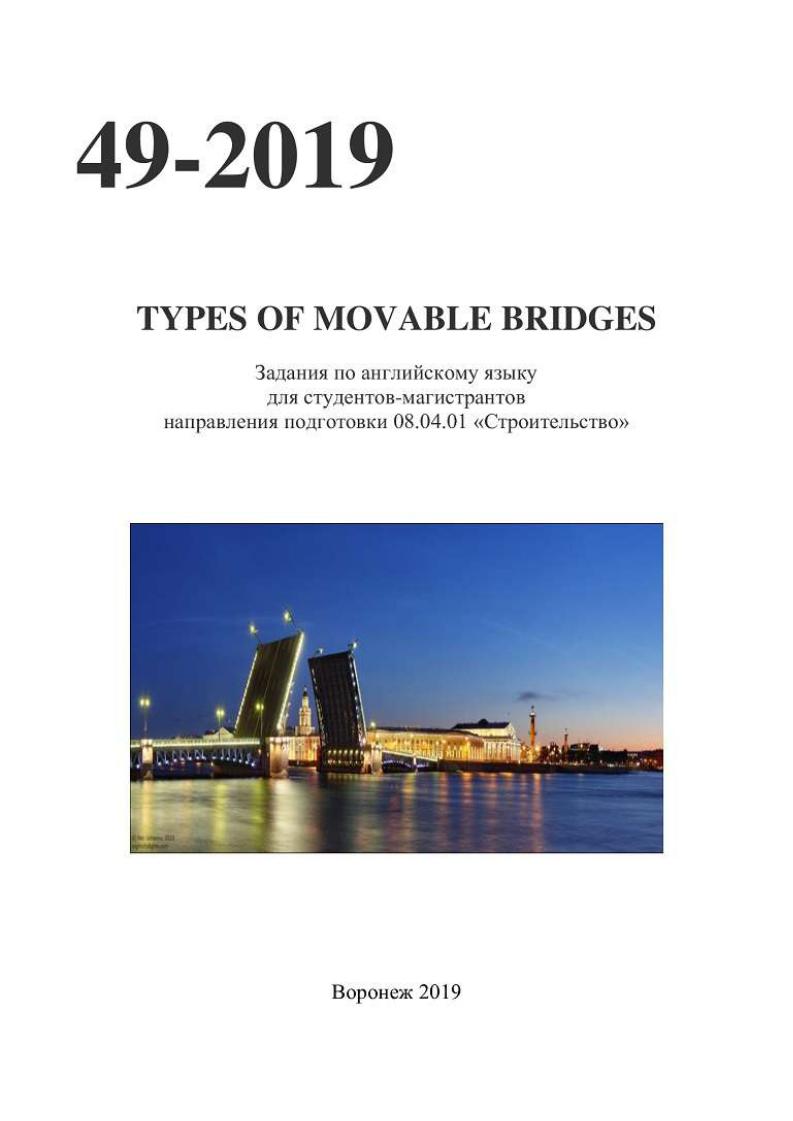
Министерство науки и высшего образования Российской Федерации
Федеральное государственное бюджетное образовательное
учреждение высшего образования
«Воронежский государственный технический университет»
Кафедра строительства и эксплуатации автомобильных дорог
TYPES OF MOVABLE BRIDGES
Задания по английскому языку для студентов-магистрантов
направления подготовки 08.04.01 «Строительство»
Воронеж -2019
1
УДК802.0:625.745.12 (07) ББК 81.2 АНГЛ:39.112я7
Составители:
Т. В. Мордовцева, М. М. Зотова
TYPES OF MOVABLE BRIDGES : задания по английскому языку
для студентов-магистрантов направления подготовки 08.04.01 «Строительство» / ФГБОУ ВО «Воронежский государственный технический университет»; сост.: Т. В. Мордовцева, М. М. Зотова. – Воронеж: Изд-во ВГТУ, 2019. – 25 с.
Приводятся задания, которые направлены на отработку и закрепление таких аспектов английского языка, как чтение, лексика, грамматика, говорение. Упражнения носят творческий характер и призваны сформировать положительную мотивацию к изучению предложенной темы и предмета в целом, а также обеспечить формирование навыков устной коммуникации на иностранном языке
Задания предназначены для студентов-магистрантов, обучающихся на дорожно-транспортном факультете по программе «Совершенствование технологических изысканий и проектирование транспортных сооружений».
Ил. 20. Библиогр.: 3 назв.
УДК802.0:625.745.12 (07) ББК 81.2 АНГЛ:39.112я7
Рецензент – О. В. Рябова, д. т. н. проф. кафедры строительства и эксплуатации автомобильных дорог
Печатается по решению учебно-методического совета Воронежского государственного технического университета
2
Введение
Приводятся аутентичные тексты профессиональной направленности, а также разнообразные по форме и содержанию задания и упражнения по английскому языку, основанные на активных технологиях обучения и направленных на активизацию изученного материала.
UNIT I
THE HISTORY OF MOVABLE BRIDGES
I.Read the text and answer the questions below the text
Movable bridges are only necessary on navigable waters. Wooden Dutch-style draw bridges were used prior to the introduction of swing bridges (possibly 1650). When draw bridges were opened it was difficult for the bridge deck to clear the bridge's navigable passage completely, and this was probably the main reason for the development of the swing bridge. The increasing size of bridges in the early nineteenth century meant that greater force was needed for operating an opening bridge. Swing bridges were easier than draw bridges to balance. Vertical lift bridges were also built, but they were more expensive and had limited clearance so were unsuitable for docks. In the first half of the nineteenth century, cast iron was used for most large swing bridges. Outside girders were often damaged by glancing blows from ships passing through the bridge passage. The width of passage was also restricted to around 40 feet, too narrow for the paddle boats which came into use in the midnineteenth century. From this time iron, and later steel, lattice and plate swing bridges were introduced. They were still vulnerable to damage from passing ships and many were subsequently replaced by rolling bascule bridges. Other types of movable bridge were also developed
1.What are movable bridges constructed for?
2.What was the reason for development of swing bridges?
3.What kind of movable bridges are mentioned in the text?
4.What material was applied for swing bridges construction in 19 century?
II. Find English equivalents for the following words and phrases:
1.Мосты с откатными разводными частями
2.Мосты с вертикальным подъемом
3.Деревянные мосты по голландскому типу
4.Судоходство
5.Разводной мост с поворотной фермой
6.Вертикальные подъемные мосты
3
7.Проходящие суда
8.Поворотный мост
9.Балочныные фермы
10.Ограниченная высота пролета моста
11.Разводные мосты
III. Find Russian equivalents for the following phrases:
1.Navigable waters.
2.Movable bridges
3.Swing bridges
4.Navigable passage
5.Bridge deck
6.Swing bridges
7.Draw bridges
8.Were also built,
9.Vertical lift bridges
10.Glancing blow
11.Paddle boat
12.Cast iron
13.Girders
14.Rolling bascule bridge
15.Wooden Dutch-style draw bridges
16.Limited clearance
IV. Translate the text into Russian
V. Find the right variant of the bridges description:
Movable bridge |
Is with a counterweight that continuously balances a span, or |
|
|
||
|
"leaf", throughout its upward swing to provide clearance for |
|
|
boat traffic. It may be singleor double-leafed. |
|
|
|
|
Vertical lift bridge |
is a bridge that moves to allow passage for boats or barges. |
|
|
||
|
|
|
Rolling bascule |
movable bridge that has as its primary structural support a |
|
bridge |
||
vertical locating pin and support ring, |
||
|
||
|
|
|
Swing bridge |
is a bridge in which a span rises vertically while remaining |
|
|
||
|
parallel with the deck. |
|
|
|
4
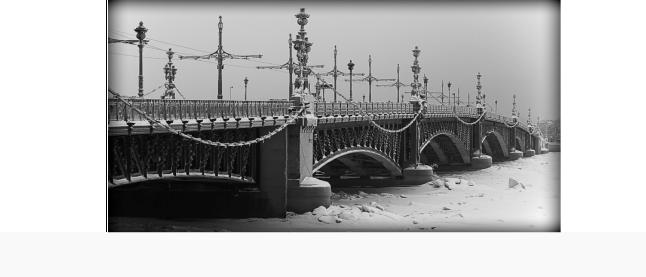
V. Retell the text briefly
UNIT 2
TYPES OF MOVABLE BRIDGES
I.Read the text and then try to name the famous bridges of this type
A bascule bridge is a moveable bridge with a counterweight that continuously balances a span throughout its upward swing to provide clearance for boat traffic. It may be single or double leafed. The name comes from the French term for balance scale, which employs the same principle. Bascule bridges are the most common type of movable span because they open quickly and require relatively little energy to operate.
Bascule bridges have been in use since ancient times. However, it was not until the adoption of steam power in the 1850s that very long, heavy spans could be moved quickly enough for practical application. The Blagoveshchensky Bridge (Lieutenant Schmidt Bridge) across the Neva River in Saint Petersburg was the first large bascule bridge, opened in 1850. (fig.1)
Fig. 1. Blagoveshchensky bridge
II.Read the text and answer the questions:
1.Is Pegas bridge a type of beam bridge?
2.Why was it called Pegas bridge?
3.What is the main peculiarities of this bridge?
4.Does the project allow a greater clearance of the bridge?
Pegasus Bridge is a bascule bridge (a type of movable bridge), built in 1934, that crossed the Caen Canalin Normandy, France. The name is derived from the shoulder emblem worn by the British airborne forces, which is the flying horse Pegasus)
5
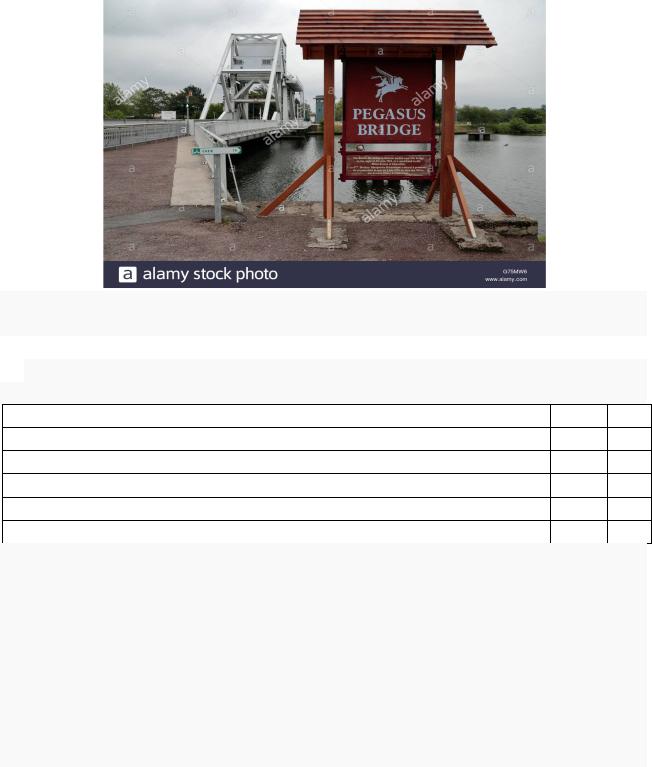
Design
The structure of Pegasus Bridge is an example of a subtype of bascule bridge or "rolling bridge". Bridges of this type do not pivot about a hinge point, but roll back on curved tread plates attached to the girders of the main span. This design allows a greater clearance of the waterway for a given opening angle (fig. 2).
Fig. 2. A rolling lift bridge (such as the Pegasus Bridge)
III.Read the text below and say if the following sentences true or false.
T F
The fixed –trunnion rotates back on curved treat plates
The rolling lift trunnion raises the span by rolling on a
The "Scherzer" rolling lift is a patented refinement by Kerbedz
The rarer Rall type was patented (1901) by William Donald Scherzer
A bascule's span may be located either above or below the bridge deck.
There are three types of bascule bridge designs and counterweights required to balance a bascule's span (fig. 3) may be located either above or below the bridge deck. The fixed-trunnion rotates around a large axle that raises the span(s). The rolling lift trunnion (sometimes a "Scherzer" rolling lift), raises the span by rolling on a track resembling a rocking chair base. The "Scherzer" rolling lift is a patented refinement by the American engineer William Donald Scherzer. The Rall type combines rolling lift with longitudinal motion on trunnions when opening. It was patented (1901) by Theodor Rall. One of the few surviving examples is the Broadway Bridge (1913), in Portland, Oregon a "Scherzer" rolling lift (fig. 5).
6
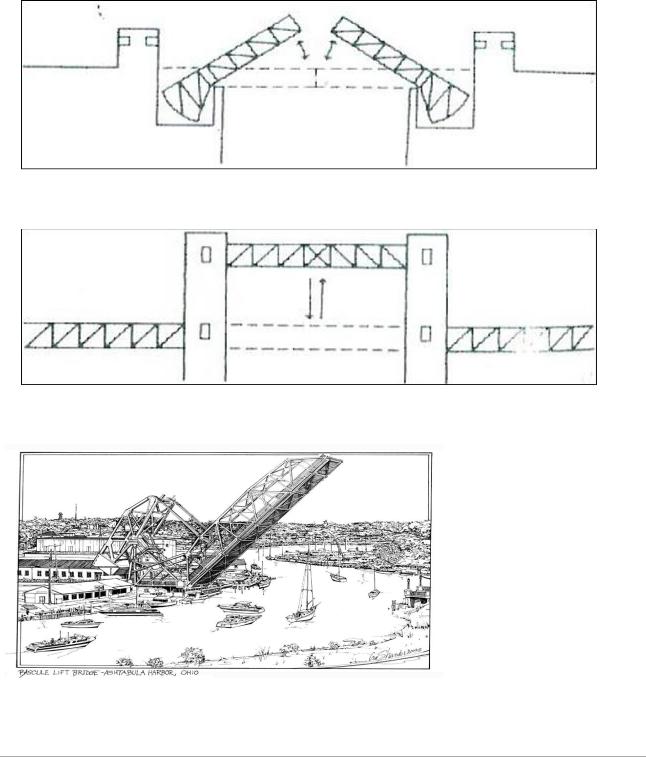
Fig. 3. Bascule bridge
Fig. 4. Vertical lift bridge
Fig. 5. Swing bridge
IV. Translate the texts from English into Russian using the word list below.
Design
The Rolling Bridge was conceived by British designer Thomas Heatherwick, designed by Anthony Hunt with Packman Lucas. The bridge consists of eight triangular sections hinged at the walkway level and connected above by two-part links that can be collapsed towards the deck by hydraulic cylinders, which are concealed in vertical posts in the bridge parapets. To allow the passage of boats, the hydraulic pistons are activated and the bridge curls up until its two ends join, to form
an octagonal shape measuring one half of the waterway's width at that point. (fig. 6).
7
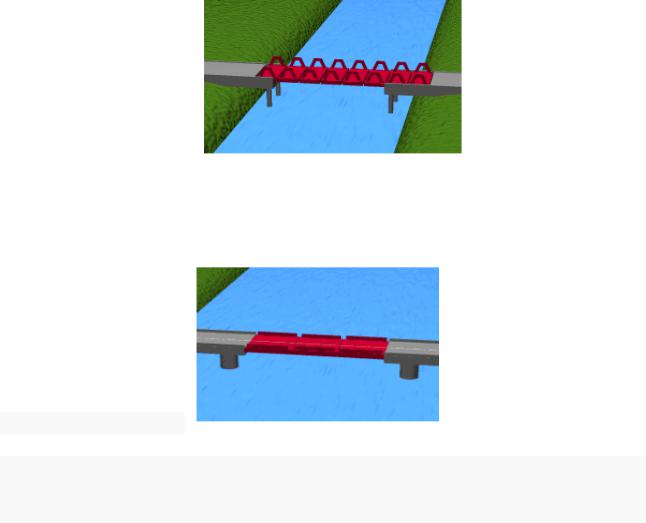
Fig. 6. Rolling bridge
Folding bridge – a drawbridge with multiple sections that collapse together horizontally (fig. 7).
Fig. 7. Folding bridge
V. Read the text and say what the benefits over other movable bridges vertical-lift bridge has and what its the biggest disadvantage is.
Vertical-lift bridge – the bri dge deck is lifted by counterweighted cables on mounted towers. (fig. 8).
A vertical-lift bridge or lift b ridge is a type of movable bridge in which a span rises vertically while remaining parallel with the deck.The vertical lift offers several benefits over other movable brid ges such as the bascule and swing-span bridge. Generally speaking they cost less to build for longer
moveable spans. The counterweights in a vertical lift are only required to be equal to the weight of the deck, whereas bascule bridge counter-weights mu st weigh several times as much as the span b eing lifted. As a result, heavier materials can be used in the deck, and so this type of bridge is especially suited for heavy ra ilroad use. Although most vertical-lift bridges use towers, each equipped with counter-weights, some use hydraulic jacks loc ated below the deck. Another design u sed balance beams to lift the deck, with pivotin g bascules located on the top of the lift towers. The biggest disadvantage to the vertical-lift bridge (in comparison with ma ny other designs) is the height restriction for vessels passing under it. This is a result of the deck remaining suspended above the passageway.
8
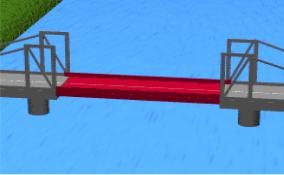
Fig. 8. Vertical-lift bridge
VI. Match the expressions from the left column with those from the right one
Retractable |
the brid ge deck rotates around a fixed point, usually at the cen- |
bridge |
tre, but may resemble a gate in its operation |
Table bridge |
the brid ge deck, which is curved and pivoted at each end, is |
|
lifted at an angle |
Submersible |
a lift bridge with the lifting mechanism mounte d underneath it |
bridge |
|
Tilt bridge |
the brid ge deck is retracted to one side |
|
|
Swing bridge |
also called a ducking bridge, the bridge deck is lowered down |
|
into the water |
|
|
Word List
bascule - крыло раскрывающегося моста; подъёмная, разводная часть моста counterweight – контргруз, противовес
swing - качать; раскачивать; размахивать; качание; колебание clearance - отверстие (моста)
leaf bridge – разводной мост
leaf of bascule bridge - кры ло раскрывающегося моста scale – чаша весов, взвешивать
adoption – принятие subtype – подтип
rolling bridge - откатный мост
pivot - точка опоры (рычага) ; точка вращения hinge – петля
roll back – откатываться назад
tread ступень (лестницы) 2) перекладина лестницы-стремянки 3) обод колеса; звено гусеничного хода
girder - балка; брус; перекл адина; балочная ферма
9
